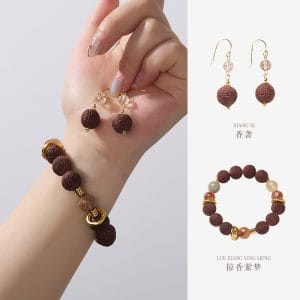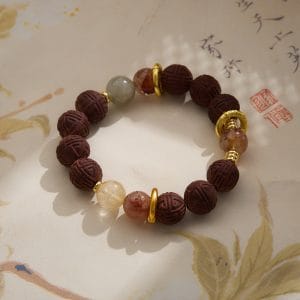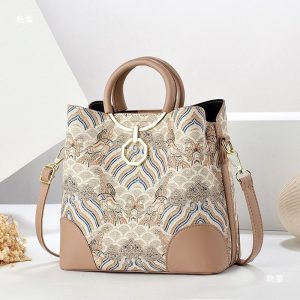The Timeless Thread: A Journey Through Embroidery's HistoryThe story of embroidery is a narrative woven through the very fabric of human civilization. This intricate craft, the art of decorating material with a needle and thread, boasts an origin that is as ancient as it is global. Archaeological evidence, such as fossilized remains of heavily hand-stitched clothing and decorated boots, points to its practice during the Cro-Magnon era, over 30,000 years ago. It did not emerge from a single culture but appeared independently across continents, from the silk-threaded landscapes of ancient China, where it denoted social status, to the elaborate pharaonic regalia of Egypt. In the medieval courts of Europe and the nomadic tribes of Central Asia, this skill evolved from a practical necessity for mending to a prestigious art form, a symbol of wealth, identity, and meticulous craftsmanship. Understanding this deep, multicultural heritage is the first step for any modern buyer; it connects the piece you hold to a lineage of artisans spanning millennia.
Decoding Styles: From Regional Roots to Modern MasteryFor a prospective buyer, recognizing the major styles born from embroidery’s diverse origin is crucial to making an informed and meaningful purchase. Each style carries the cultural DNA of its birthplace. Chinese embroidery, notably from regions like Suzhou and Hunan, is renowned for its breathtaking realism and subtle color gradations on silk, often depicting florals and landscapes. Conversely, Japanese Sashiko originated as a functional, reinforcing stitch among the working class, creating beautiful geometric patterns out of necessity. In India, the opulent Zardozi technique uses metal threads and precious stones, a craft favored by Mughal emperors. European traditions gave us the precise canvas work of Bargello and the delicate freehand beauty of Broderie Anglaise. Today, contemporary artists blend these historical techniques with modern aesthetics. Industry reports suggest the global handicrafts market, where premium embroidery is a key segment, is experiencing steady growth as consumers increasingly value artisanal quality and cultural storytelling over mass-produced items.
When evaluating a piece, the materials speak volumes about its quality and authenticity. The origin of embroidery is rooted in using the best locally available resources: linen and wool in Europe, silk in Asia, cotton in the Americas. A high-quality contemporary piece will often continue this tradition, utilizing natural fiber foundations like linen, cotton, or silk. The threads themselves are a major indicator; look for certified silk, long-staple cotton like perlée, or fine wool. Synthetic threads, while durable and colorfast, often lack the luster and depth of their natural counterparts. The backing material should be tight and even, and for wearable items like haute couture, the interior finishing (how the back of the work is secured) is a hallmark of luxury, ensuring durability and a comfortable feel against the skin.
The value of an embroidered item is not solely in its aesthetic appeal but in the immense skill and time invested. This is where the human hand truly diverges from machine production. A single, meticulously hand-embroidered handkerchief can represent dozens of hours of labor. Techniques like French knots, satin stitch, and needlepainting require years of practice to master. When you purchase a handcrafted piece, you are acquiring a slice of the artisan’s time and dedication. This inherently limits production volume and justifies a higher price point. Machine embroidery, while excellent for uniformity and accessibility, cannot replicate the subtle variations and soulful imperfection of handwork. As a buyer, appreciating this distinction helps you understand the market and invest in pieces that hold their value as art.
Your journey as an informed buyer should extend beyond the point of purchase to the care and preservation of your textile art. The very materials that make hand embroidery valuable—natural fibers and dyes—also make it delicate. Proper care is a respect for its origin and craftsmanship. Always follow specific care labels, but general rules include avoiding prolonged direct sunlight to prevent fading, storing in a breathable cotton bag away from moisture, and handling as little as possible with clean hands. For cleaning, surface dusting or professional cleaning by a specialist familiar with conservation techniques is almost always recommended over home washing. A well-cared-for piece can be enjoyed for generations, becoming a future heirloom that continues its story. historical context
In today’s global marketplace, the ethics of how and where you buy are paramount. The rise of fast fashion has unfortunately led to the exploitation of artisans in some regions, with designs being mass-produced cheaply without fair compensation for the original craftspeople. As a conscious buyer, seek out reputable sellers, fair-trade organizations, or buy directly from artisans or their collectives when possible. Look for transparency in the supply chain and certifications that guarantee fair wages and safe working conditions. By choosing ethically sourced embroidery, you do more than acquire a beautiful object; you become a patron of sustainable craft, ensuring these ancient techniques and the communities that uphold them can thrive for centuries to come.
Embroidery is far more than decorative stitching; it is a tactile language of human history, culture, and artistry. From its humble and practical origin to its status as a celebrated craft, it represents a unique confluence of skill, creativity, and storytelling. As a buyer, your informed choices empower you to select pieces of genuine quality, support ethical practices, and become a custodian of this enduring heritage. Whether you are drawn to the bold patterns of a tribal textile or the refined elegance of a silk masterpiece, you are participating in a tradition that connects us all through a single, timeless thread.
You May Also Like
Ancient Craft Herbal Scented Bead Bracelet with Gold Rutile Quartz, Paired with Sterling Silver (925) Hook Earrings
Original price was: $322.00.$198.00Current price is: $198.00. Add to cartThe Palace Museum Paper-Cut Light Art Fridge Magnets: Chinese Cultural Style Creative Gift Series
Price range: $27.00 through $36.00 Select options This product has multiple variants. The options may be chosen on the product pageGuangxi Zhuang Brocade Handmade Tote – Ethnic Boho Large-Capacity Shoulder Bag
Original price was: $172.00.$150.00Current price is: $150.00. Add to cartAncient Craftsmanship & ICH Herbal Beads Bracelet with Yellow Citrine & Silver Filigree Cloud-Patterned Luck-Boosting Beads
Original price was: $128.00.$89.00Current price is: $89.00. Add to cart








